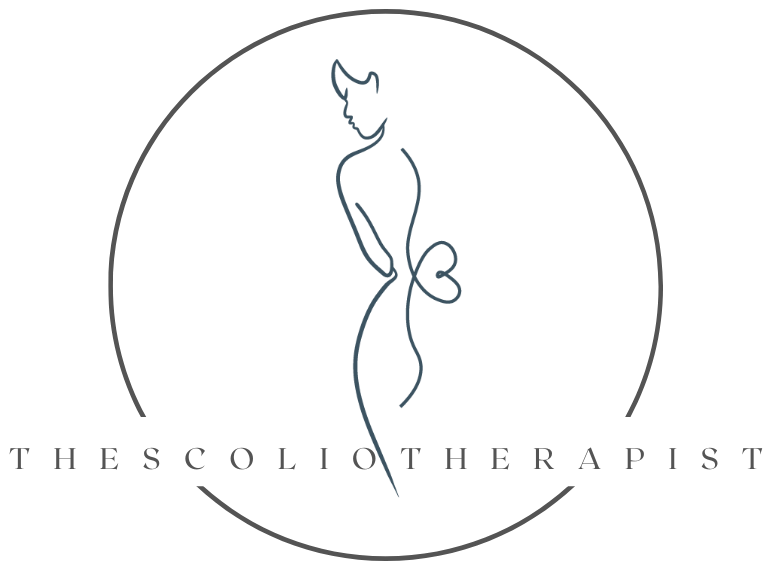Pregnancy, Pelvic Floor Health, and Scoliosis with Dr. Laura Glazebrook
A big part of my journey as a scoliosis patient and coach involves researching new information on scoliosis. I want to know as much as possible about this condition so I can successfully help myself and my clients feel as good as possible.
I’ve talked before about how a spinal curve can impact other parts of the body, like the lymphatic and digestive systems. But scoliosis can also affect your pelvic health.
I recently chatted about this topic with Dr. Laura Glazebrook, a physical therapist who specializes in scoliosis and pelvic health. She’s also a spinal fusion patient and mother of two, so she has personal experience with how scoliosis affects pregnancy, birth, and postpartum recovery.
Dr. Glazebrook and I covered a range of topics, from pregnancy and childbirth to general pelvic floor health. We also talked about the fascinating potential link between scoliosis and tongue tie. I learned a lot, and I’m excited to share the highlights with you!
Can You Get Pregnant With Scoliosis?
Every person is different, but there’s no evidence that scoliosis or spinal fusion automatically reduces fertility. Many people with scoliosis have children and experience a safe and healthy pregnancy, birth, and postpartum recovery.
Of course, scoliosis can often contribute to related challenges, including painful sexual intercourse and back pain. These issues can make it more challenging to get pregnant or have an uncomplicated pregnancy. It’s crucial to work with your healthcare team to make sure you’re doing everything possible to prepare your spine and the rest of your body for pregnancy and birth.
Birth Considerations With Scoliosis or Spinal Fusion
Your spinal curve can impact your eligibility for an epidural. The shape and details of your unique curve will determine whether or not an epidural is possible. Additionally, some hospitals and/or anesthesiologists may have blanket policies that don’t permit the administration of an epidural to someone with spinal fusion or a scoliosis curve.
If you know ahead of time what your pain management options are for delivery, it’s easier to create a detailed birth plan that’s realistic for your situation.
Scoliosis and Pelvic Health
Although many people (and even some medical professionals) maintain that the spinal curve doesn’t impact the pelvic floor, it does. Your spine is directly connected to your pelvis, and that means both parts impact each other.
When the spine is curved, other parts of your skeletal system, including the pelvis, move to try to compensate for the curvature. As such, most people with scoliosis have an asymmetrical pelvis. That asymmetry can impact the pelvic floor muscles, and those stress forces can affect continence, sexual health, core stability, and even respiration and lymph flow.
If your hip muscles are weak or uneven (another common symptom of scoliosis), your pelvic floor muscles may start overworking to try to compensate. Overly tight pelvic floor muscles can contribute to constipation and back pain.
This situation may sound hopeless, but it’s not. In fact, consistently doing scoliosis-specific exercises, like Schroth therapy and/or self-corrections, can improve your alignment, which in turn allows the pelvis and pelvic floor muscles to function more normally.
Tongue Ties and Scoliosis
Scoliosis doesn’t just impact the lower part of your body. There’s some evidence that it’s linked to tongue ties as well. Having a tongue tie naturally causes a lot of asymmetrical muscular tension in the jaw, neck, and airways. There is some evidence that this type of tension can contribute to scoliosis.
Not every child with a tongue tie will have scoliosis. And not every person with scoliosis has a tongue tie. But if you (or your child) have one of these conditions, it’s worth doing some research to see if you might have the other. And having a tongue tie released — even as an adult — may help mitigate some of your scoliosis symptoms.
Understanding How Scoliosis Affects Your Whole Body
Most of us focus entirely on our spinal curve when we think about scoliosis. But it’s crucial to understand how the shape of your spine impacts every other part of your body. Having scoliosis or spinal fusion can impact your experience with pregnancy, birth, and postpartum. And it can affect pelvic floor health for men and women alike. If you experience a lot of lower back pain from your scoliosis, a pelvic floor specialist may be able to help.
If you want to reduce your scoliosis symptoms, focus on strengthening your spine and improving your posture. Doing so helps put other parts of your body in alignment and reduce common symptoms like pain, reproductive issues, and pelvic floor problems.
Not sure where to start? Check out The Scoliosis Movement Bootcamp, a 6-month self-paced virtual course that covers simple, effective corrections you can incorporate into your daily life. And it’s less than the cost of a single X-ray! Join The Scoliosis Movement Bootcamp today!
If you want to hear my entire conversation with Dr. Laura Glazebrook, listen to my podcast, Ahead of the Curve. Subscribe to get every episode when it airs!
Resources Mentioned
Find Laura here:
